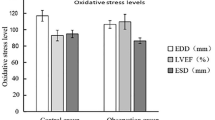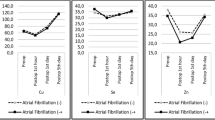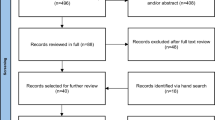Abstract
Chordae tendineae rupture process is associated with increased production of inflammatory and angiogenesis mediators in connective tissues, which contributes to chronic inflammation and pathogenesis of degenerative chordae. A few trace elements are known to possess antioxidant, anti-inflammatory, and antiangiogenic properties. Therefore, the aim of this study was to determine whether zinc, selenium, midkine (MK), interleukin-1β (IL-1β), interleukin-6 (IL-6), interleukin-8 (IL-8), tumor necrosis factor-alpha (TNF-α), vascular endothelial growth factor-A (VEGF-A), platelet-derived growth factor-BB (PDGF-BB), and reduced glutathione (GSH) levels are associated with inflammation and angiogenesis processes in the context of a potential etiology causing aggravation of mitral regurgitation and/or ruptured chordae tendineae. Seventy-one subjects comprising 34 patients with mitral chordae tendineae rupture (MCTR) and 37 healthy controls diagnosed on the basis of their clinical profile and transthoracic echocardiography were included in this study. The levels of GSH, MK, selenium, and zinc were found to be lower in the patients group when compared to control group. There were no significant difference in plasma TNF-α, IL-1β, IL-6, IL-8, VEGF-A, and PDGF-BB levels between two groups. There were positive significant correlations between MK and GSH, MK, and selenium levels in patients with MCTR. According to our data in which selenium, zinc, MK, and GSH decreased in MCTR patients, inflammatory response, oxidative stress, and trace element levels may contribute to etiopathogenesis of mitral regurgitation and/or ruptured chordae tendineae.










Similar content being viewed by others
References
Nalbant A, Kaya T, Varım C et al (2013) Hemotological parameters in patients with mitral regurgitation secondary to idiopathic hordate tendineaee rupture. HealthMED 7:430–434
Kimura N, Shukunami C, Hakuno D et al (2008) Local tenomodulin absence, angiogenesis, and matrix metalloproteinase activation are associated with the rupture of the chordate tendineae cordis. Circulation 118:1737–1747
Yoshioka J, Lee RT (2008) Vascularization as a potential enemy in valvular heart disease. Circulation 118:1694
Senol N, Nazıroglu M, Yuruker V (2014) N-acetylcysteine and selenium modulate oxidative stress, antioxidant vitamin and cytokine values in traumatic brain injury-induced rats. Neurochem Res 39(4):685–692
Onal S, Nazıroglu M, Colak M et al (2011) Effects of different medical treatments on serum copper, selenium and zinc levels in patients with rheumatoid arthritis. Biol Trace Elem Res 142(3):447–55
Turker Y, Nazıroglu M, Gumral N, Celik O et al (2011) Selenium and L-carnitine reduce oxidative stress in the heart of rat induced by 2.45-GHz radiation from wireless devices. Biol Trace Elem Res 143(3):1640–1650
Arslan C, Altan H, Akgun OO et al (2010) Trace elements and toxic heavy metals play a role in Buerger disease and atherosclerotic peripheral arterial occlusive disease. Int Angiol 29:489–495
Sahebari M, Abrishami-Moghaddam M, Moezzi A et al (2014) Association between serum trace element concentrations and the disease activity of systemic lupus erythematosus. Lupus 23:793–801
Johtatsu T, Andoh A, Kurihara M, Iwakawa H et al (2007) Serum concentrations of trace elements in patients with Crohn’s disease receiving enteral nutrition. J Clin Biochem Nutr 41:197–201
Yerlikaya FH, Toker A, Arıbaş A (2013) Serum trace elements in obese women with or without diabetes. Indian J Med Res 137:339–345
Kiziler AR, Aydemir B, Guzel S et al (2010) May the level and ratio changes of trace elements be utilized in identification of disease progression and grade in prostatic cancer? Trace Elem Electrolytes 27:65–72
Hassanzadeh M, Faridhosseini R, Mahini M et al (2006) Serum levels of TNF-α, IL-6 and selenium in patients with acute and chronic coronary artery disease. Iran J Immunol 3:142–144
Guan MC, Tang WH, Xu Z et al (2014) Effects of selenium-enriched protein from Ganoderma lucidum on the levels of IL-1β and TNF-α, oxidative stress, and NF-κB activation in ovalbumin-induced asthmatic mice. Evid-Based Complem Alter Med 182817:6
Prasad AS (2007) Zinc: mechanisms of host defense. J Nutr 137:1345–1349
Ho E, Courtemanche C, Ames BN (2003) Zinc deficiency induces oxidative DNA damage and increases p53 expression in human lung fibroblast. J Nutr 133:2543–2548
Nazıroglu M, Yıldız K, Tamturk B, Erturan I, Flores-Arce M (2012) Selenium and psoriasis. Biol Trace Elem Res 150(1–3):3–9
Yazihan N, Kocak MK, Akcil E et al (2011) Role of midkine in cadmium-induced liver, heart and kidney damage. Hum Exp Toxicol 30:391–397
Krzystek-Korpacka M, Matusiewicz M, Banas T (2006) Structure and function of midkine, a novel heparin-binding growth factor. Post Hig Med Dosw 60:591–601
Hoeben A, Landuyt B, Martin S et al (2004) Vascular endothelial growth factor and angiogenesis. Pharmacol Rev 56:549–580, Review
Lang RM, Bierig M, Devereux RB et al (2006) American society of echocardiography’s nomenclature and standards committee: recommendations for chamber quantification. Eur J Echocardiogr 7:79–108
Kula I, Solak MH, Ugurlu M et al (2011) Determination of mercury, cadmium, lead, zinc, selenium and iron by ICP-OES in mushroom samples from around thermal power plant in Muğla, Turkey. Bull Environ Contam Toxicol 87:276–281
Anderson ME (1985) Determination of glutathione and glutathione disulfide in biological samples. Methods Enzymol 113:548–555
Gua CH, Wang CL, Chen PC et al (2011) Linkage of some trace elements, peripheral blood lymphocytes, inflammation, and oxidative stress in patients undergoing either hemodialysis or peritoneal dialysis. Perit Dial Int 31:583–591
Kose SA, Nazıroglu M (2014) Selenium reduces oxidative stress and calcium entry through TRPV1 channels in the neutrophils of patients with polycystic ovary syndrome. Biol Trace Elem Res 158:136–142
Huang Z, Rose AH, Hoffmann PR (2012) The role of selenium in inflammation and immunity:from molecular mechanisms to therapeutic opportunities. Antioxid Redox Signal 16:705–743
Prasad AS (2014) Zinc: an antioxidant and anti-inflammatory agent: role of zinc in degenerative disorders of aging. J Trace Elem Med Biol 28:364–371, Review
Yang FY, Lin ZH, Li SG et al (1988) Keshan disease-an endemic mitochondrial cardiomyopathy in China. J Trace Elem Electrolytes Health Dis 2:157–163
Salaru DL, Albert C, Königsmark U et al (2014) Serum levels for midkine, a heparin-binding growth factor, inversely correlate with angiotensin and endothelin receptor autoantibody titers in patients with macroangiopathy. Int Angiol 33:372
Shaygannejad V, Montazeri S, Jamshidian A et al (2014) Correlation of midkine serum level with pro-and anti-inflamatory cytokines in multiple sclerosis. Iran J Immunol 11:134–138
Riccieri V, Stefanantoni K, Vasile M et al (2011) Abnormal plasma levels of different angiogenic molecules are associated with different clinical manifestations in patients with systemic sclerosis. Clin Exp Rheumatol 29(Suppl 65):46–52
Grunewald M, Avraham I, Dor Y et al (2006) VEGF-induced adult neovascularization: recruitment, retention, and role of accessory cells. Cell 124:175–189
Hummers LK, Hall A, Wigley FM et al (2009) Abnormalities in the regulators of angiogenesis in patients with scleroderma. J Rheumatol 36:576–582
Weckbach LT, Groesser L, Borgolte J et al (2012) Midkine acts as proangiogenic cytokine in hypoxia-induced angiogenesis. Am J Physiol Heart Circ Physiol 303:H429–438
Kim YW, West XZ, Byzova TV (2013) Inflammation and oxidative stress in angiogenesis and vascular disease. J Mol Med(Berl) 91:323–328
Pufe T, Petersen WJ, Mentlein R et al (2005) The role of vasculature and angiogenesis for the pathogenesis of degenerative tendons disease. Scand J Med Sci Sports 15:211–222
Acknowledgments
This work was supported by the Research Fund of the University of Sakarya (project number: 2013-08-06-011). Also, this study was partly presented at 5th International Congress on Cell Membranes and Oxidative Stress: Focus on Calcium Signaling and TRP Channels, Cell Membranes and Free Radical Research 6(1): pp 365–366, 9–12 Sep, Süleyman Demirel University, Isparta Turkey (2014) and Annual Meeting of the German Biophysicsal Society, p 88, 14–17 Sep, Lübeck University, Lübeck Germany (2014).
Conflict of Interest
The authors declare that they have no conflicts of interest related to the publication of this manuscript.
Author information
Authors and Affiliations
Corresponding author
Rights and permissions
About this article
Cite this article
Aydemir, B., Akdemir, R., Vatan, M.B. et al. The Circulating Levels of Selenium, Zinc, Midkine, Some Inflammatory Cytokines, and Angiogenic Factors in Mitral Chordae Tendineae Rupture. Biol Trace Elem Res 167, 179–186 (2015). https://doi.org/10.1007/s12011-015-0307-6
Received:
Accepted:
Published:
Issue Date:
DOI: https://doi.org/10.1007/s12011-015-0307-6




